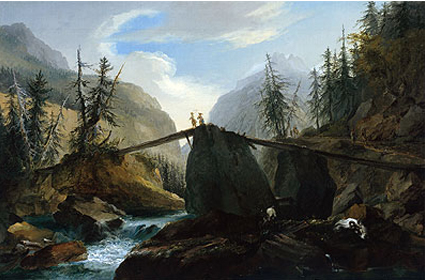Andrew Graham-Dixon scales the heights of Friedrich and notes the tendency of Swiss artists to make molehills out of mountains
Orson Welles, in The Third Man, took a famously dim view of Swiss culture: ''In Italy for 30 years under the Borgias they had warfare, terror, murder, bloodshed - and they produced Michelangelo, Leonardo da Vinci and the Renaissance. In Switzerland they had brotherly love, 500 years of democracy and peace. And what did that produce? The cuckoo clock.''
The National Gallery's new exhibition, ''Nineteenth-century paintings from the Oskar Reinhart Foundation'', is among other things a belated attempt to prove Welles wrong about Swiss culture. Exhibit 11, Henry Fuseli's Jealousy, is strong evidence in the case for the defence. Emerging from swirling vapours of liverish copper green and red the colour of dried blood, vapours through which a sickle moon sickly shines, portending lunacy, four figures are seen to writhe and struggle. Less like human beings than horribly animated worms, they are the involuntary exemplars of Fuseli's less than cheerful view of relations between the sexes. A male figure (or what passes for a male figure, in Fuseli's anatomically disturbed, boneless art) grapples with a swooning and buxom maiden quite unawares that, behind him, a bare-breasted maenad armed with a pair of daggers is about to stab him in the back.
Fuseli, Switzerland's most violently morbid painter, referred to such pictures as ''poetical painting'' and claimed Michelangelo as a source of inspiration. They are, in fact, among the first attempts in Romantic art to paint the seething internal world of obsession. Fuseli was not a great artist, and his painting never rose above an over- literal mimicking of the visual conventions of Romantic theatre, its heightened expressions and melodramatic gestures reminiscent of Coleridge's remark, on watching Garrick play...


